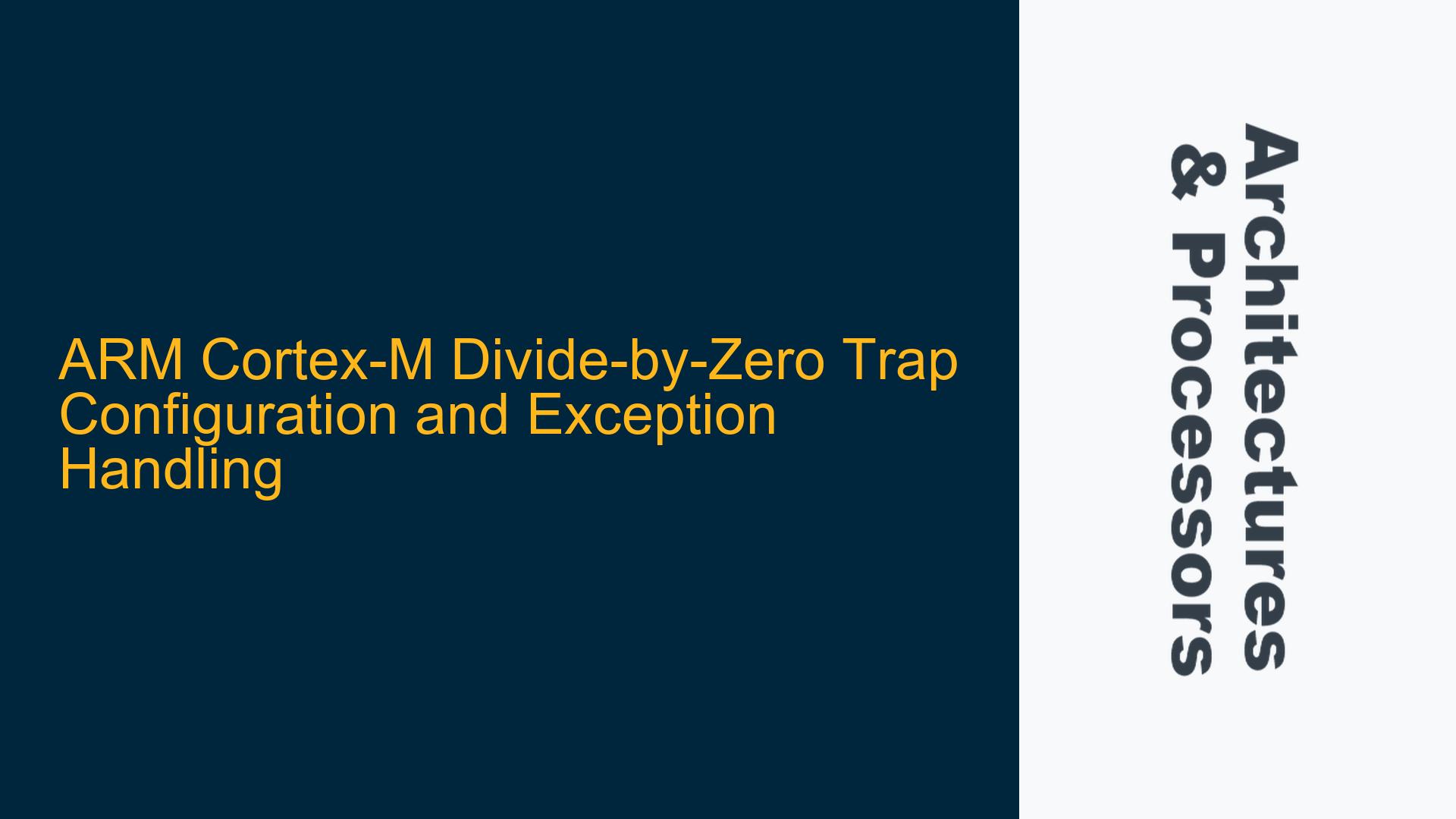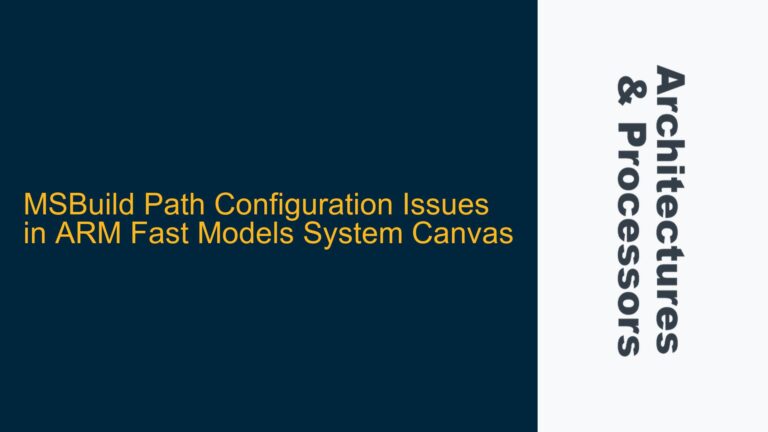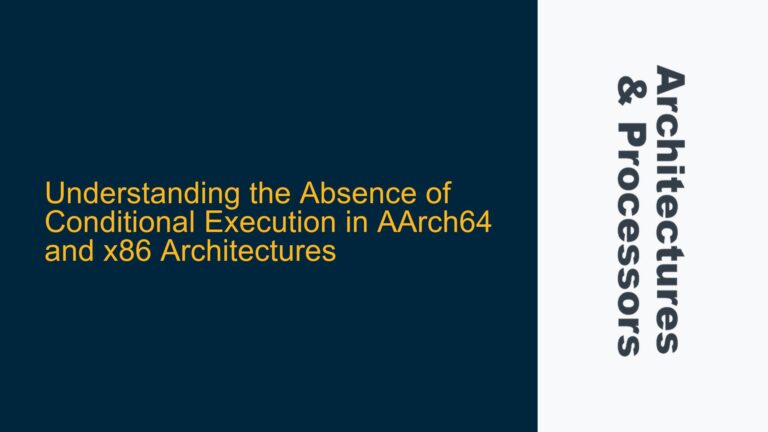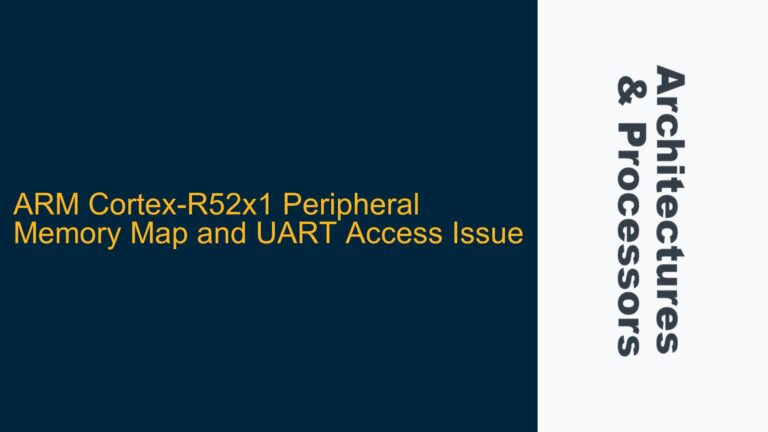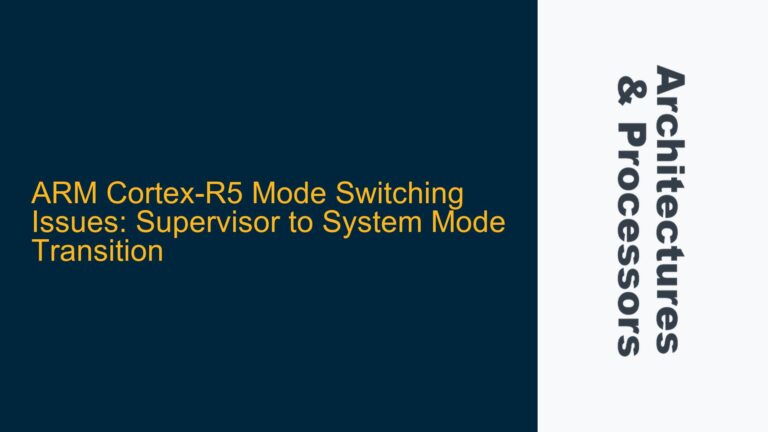Enabling CCR.DIV_0_TRP and Resulting Exceptions
The Configuration Control Register (CCR) in ARM Cortex-M processors is a critical register that controls various system behaviors, including the handling of specific faults such as divide-by-zero errors. The CCR.DIV_0_TRP bit, when enabled, configures the processor to trap divide-by-zero operations, allowing developers to handle such errors programmatically rather than allowing the operation to proceed with undefined behavior. However, enabling this bit can sometimes lead to unexpected exceptions, especially in systems where the Memory Protection Unit (MPU) is not yet configured or enabled.
When the CCR.DIV_0_TRP bit is set, the processor is expected to raise a UsageFault exception whenever a divide-by-zero operation is encountered. This is particularly useful in debugging and robust system design, as it allows for precise error handling and logging. However, the occurrence of an exception immediately after enabling this bit, as described in the scenario, suggests that there may be underlying issues related to the system’s configuration or the state of the processor at the time the bit is set.
The absence of an enabled MPU means that all memory regions have privileged access, which should, in theory, simplify the system’s behavior. However, this also means that any misconfiguration in the fault handling mechanisms or the state of the processor could lead to immediate exceptions. The key to resolving this issue lies in understanding the precise conditions under which the exception is being triggered and ensuring that all necessary configurations are in place before enabling the CCR.DIV_0_TRP bit.
Memory Access Privileges and Fault Handling Mechanisms
One of the primary considerations when enabling the CCR.DIV_0_TRP bit is the state of the processor’s fault handling mechanisms. The ARM Cortex-M architecture provides several fault handlers, including the HardFault, MemManage, BusFault, and UsageFault handlers. Each of these handlers is designed to manage specific types of faults, and their proper configuration is essential for the system to handle exceptions correctly.
In the scenario described, the exception that occurs after enabling the CCR.DIV_0_TRP bit is likely a UsageFault. This fault is triggered by various conditions, including divide-by-zero operations, unaligned memory access, and invalid execution states. The UsageFault handler must be properly configured to manage these conditions, and the system must ensure that the handler is correctly installed and enabled before the CCR.DIV_0_TRP bit is set.
Another critical factor is the state of the processor’s stack and the alignment of the stack pointer. The ARM Cortex-M architecture requires that the stack pointer be aligned to an 8-byte boundary at all times. Misalignment of the stack pointer can lead to faults, and in some cases, these faults can be misinterpreted as UsageFaults. Ensuring that the stack pointer is correctly aligned before enabling the CCR.DIV_0_TRP bit is therefore essential.
Additionally, the system must ensure that the necessary memory regions are accessible and that the processor has the required privileges to access these regions. While the absence of an enabled MPU means that all regions have privileged access, it is still important to verify that the memory map is correctly configured and that there are no conflicts or inaccessible regions that could lead to faults.
Configuring Fault Handlers and Verifying System State
To resolve the issue of exceptions occurring after enabling the CCR.DIV_0_TRP bit, a systematic approach to configuring the fault handlers and verifying the system state is required. The following steps outline the necessary actions to ensure that the system is correctly configured and that the CCR.DIV_0_TRP bit can be enabled without causing unexpected exceptions.
First, the system must ensure that the UsageFault handler is correctly installed and enabled. This involves setting up the vector table to point to the correct handler and ensuring that the handler is properly implemented to manage the specific conditions that trigger a UsageFault. The handler should be designed to log the fault condition and, if necessary, reset the system or take other appropriate actions.
Next, the system must verify that the stack pointer is correctly aligned to an 8-byte boundary. This can be done by checking the value of the stack pointer before enabling the CCR.DIV_0_TRP bit and ensuring that it meets the alignment requirements. If the stack pointer is misaligned, it must be corrected before proceeding.
The system must also verify that the memory map is correctly configured and that all necessary memory regions are accessible. This includes checking the addresses of the stack, heap, and any other critical memory regions to ensure that they are within the accessible address space and that there are no conflicts or inaccessible regions.
Once these steps have been completed, the system can proceed to enable the CCR.DIV_0_TRP bit. This is done by writing to the CCR register, setting the DIV_0_TRP bit to 1. After enabling the bit, the system should be tested to ensure that divide-by-zero operations are correctly trapped and that the UsageFault handler is invoked as expected.
If exceptions continue to occur after enabling the CCR.DIV_0_TRP bit, further investigation may be required. This could involve examining the state of the processor at the time of the exception, including the values of the stack pointer, program counter, and other critical registers. Additionally, the system may need to be tested with different configurations to identify any underlying issues that may be contributing to the exceptions.
In conclusion, enabling the CCR.DIV_0_TRP bit in the ARM Cortex-M architecture requires careful configuration of the fault handlers and verification of the system state. By following the steps outlined above, developers can ensure that the system is correctly configured and that the CCR.DIV_0_TRP bit can be enabled without causing unexpected exceptions. This approach not only resolves the immediate issue but also contributes to the overall robustness and reliability of the system.
